Easy and quick to make, this exquisite Panang Chicken Curry features tender chicken in the most luxurious, creamy sauce. A super popular Thai-style curry that will fire up your weeknight.

I couldn’t be more excited to share this recipe with you. It’s a weeknight Thai curry chicken dish that comes together in 30 minutes by taking advantage of super flavorful store-bought curry paste.
Each simple step in the preparation of this dish, brilliantly coaxes maximum flavor out of just a few ingredients. The result is a wonderfully creamy, luscious, fiery and fragrant curry that quickly feeds your family or guests with very little effort.
- About Panang Curry
- Curry Paste Made From Scratch Vs Store-Bought
- Best Store-Bought Thai Curry Pastes
- Ingredients And Notes
- Variations And Substitutions
- How To Make Panang Curry
- How Much Curry Paste To Use?
- Frequently Asked Questions
- Serving Suggestions
- Storage Suggestions
- More Thai Recipes To Try
- Panang Chicken Curry
If you haven’t tried a Panang Curry before, prepare to be completely smitten once you do.
About Panang Curry
Panang Curry, also spelled Phanaeng or Penang, is a popular Thai curry that is much-loved for its distinct rich and robust flavor as well as its creamy, luscious texture. The curry is named after the island of Penang in Malaysia which is why the curry is often spelled Penang.
Beef or pork are the most popular protiens used to make a Panang curry. However, chicken, shrimp, or tofu have also become quite popular. Though not as common, a Panang Curry can be plant-based by using only vegetables.
As for the flavor, a Panang curry uses very similar ingredients to a classic red Thai curry, but it is slightly sweeter and richer with a mild nutty flavor from the addition of peanuts. Made with a very creamy and aromatic coconut milk base, Panang is not as spicy as green curries, but quite a bit spicier than red and yellow curries.
I have a profound addiction to just about any Thai curry, but Panang Curry is hands-down my favorite. Not only because it is utterly delicious despite a short list of ingredients, but because it comes together in a flash.
Curry Paste Made From Scratch Vs Store-Bought
To make a Panang Thai Curry you will need a Panang curry paste. Much like a red Thai curry paste, a Panang curry paste starts out with the same base ingredients; chillis, lemongrass, shallots, galangal, garlic and spices such as cumin seeds, and coriander seeds. However, the flavors are spicier and more robust in a panang curry paste, and it also includes crushed peanuts.
You can make a Panang curry paste from scratch, and if made right, it will absolutely be more flavourful than store bought. But, you may be surprised to hear that I, and may well-respected Thai cooks, do not recommend you make it from scratch. This is because galangal, dried chilis, kaffir lime leaves, and fresh lemongrass are crucial in most Thai curry pastes and not always easy to find.
So unless you are willing to hunt down every single ingredient needed to make an authentic homemade panang curry paste, you are better off buying a good quality pre-made paste from an Asian store. I learned this tip from the legendary Thai food writer and cook Leela Punyaratabandhu (if you love Thai cuisine, her award-winning Thai food blog is a must read). I have never made my own since.
That said, not all curry pastes are created equal. If you have read (or hopefully made) this Thai curry post, or this one, you will already know my little secret. If not, read on to learn which brand I recommend (and love) and which one I avoid.
Best Store-Bought Thai Curry Pastes
Thai curry pastes are full of complex flavours and buying pre-made is much more practical than making your own. To clarify, we are not talking about pre-made curry sauces. Those come prepared with coconut milk already added and serve a complete different purpose.
Favourite store-bought Thai curry pastes:
Let’s get my least favourite out of the way. Thai Kitchen is perhaps the easiest to find at most supermarkets but unfortunately it is very inferior in taste. In fact, I find it unpleasantly flavourless. If this is the only brand you have access to, make sure and doctor it up significantly.
Most Asian grocery stores sell Mae Ploy, Aroy-D, and Maesri. I have used, and like, all three brands but they do vary greatly in spice level and saltiness, so choose accordingly. Mae Ploy is the saltiest of the three so do not add any extra salt if using this brand.
Maesri is my favorite because the flavours are very authentic and well-balanced. It also comes in a convenient small can so you don’t have a lot of leftover paste to deal with.
Unfortunately, I don’t think you can find any of these brands I recommend at a regular grocery store so you will have to visit an Asian grocery store to find them. Lately, in my area, I have been having a hard time finding the maesri Panang curry paste, so when I find it, I stock up.
If you find a different brand at an Asian store that isn’t listed here, check the ingredient list. If dried chili peppers, galangal, kaffir lime leaves, and lemongrass are among the ingredients, it is likely worth a shot.
Ingredients And Notes
This chicken panang curry recipe does not call for a lot of ingredients but a few can only be found at Asian grocery stores. Trust me it is worth the trip, and do stock up, you will be making this recipe on repeat.
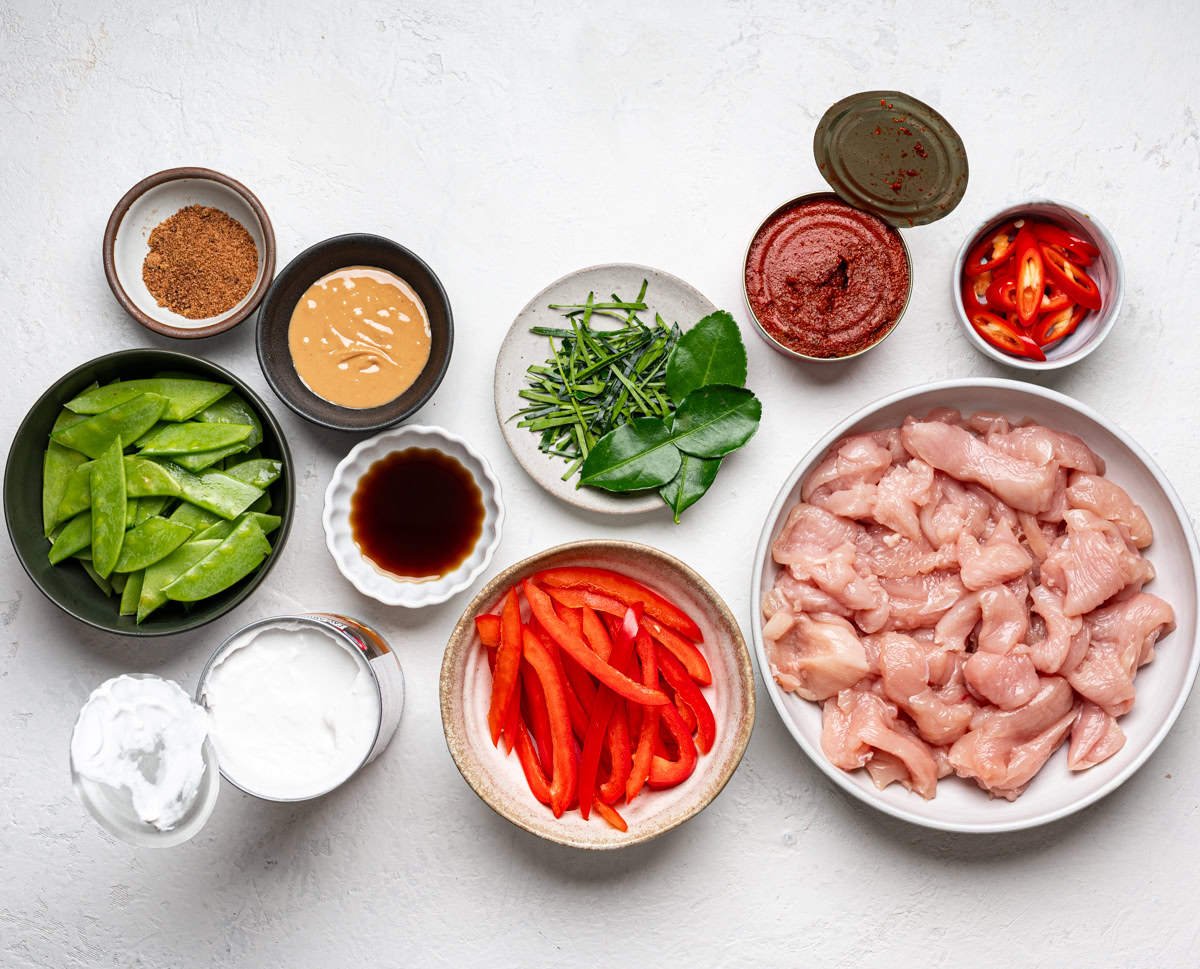
- Chicken: Here I used boneless, skinless chicken breast but chicken thighs will work just as well.
- The Curry Paste: Like most Thai curries, a Panang curry relies on a very flavorful and aromatic curry paste. A Panang Curry paste usually contains ingredients like dried chili peppers, lemongrass, galangal (a rhizome similar to ginger), kaffir lime leaves, and various spices. Thankfully, and conveniently, we can find all of those ingredients in a can at most Asian markets. This is my favorite brand or see above for other brands I recommend. TIP: If you can’t find Panang curry paste, you can use red curry paste and add just a pinch more sugar and one or two fresh bird’s eye Thai peppers, chopped.
- Peanut Butter: This adds incredible flavor and richness and is what really distinguishes a Panang curry from other curries. You will need a natural peanut butter for this curry—check that the only ingredient is “peanuts”. Alternatively, you can grind about 1/2 cup of peanuts, if you wish. Don’t be tempted to use regular peanut butter. The flavor will not be right.
- Kaffir Lime Leaves: The earthy, unique lime flavor of fresh kaffir lime leaves is essential in this curry so don’t be tempted to leave them out. You can find them at any Asian market and they freeze perfectly for years. A pre-made Panang curry paste will already contain kaffir lime leaves but the flavor is not strong enough for this curry.
- Coconut milk: For the creamiest, most luscious sauce, we use one full fat can of coconut milk. If you can find Chaokoh coconut milk, that brand is super creamy and delicious. Aroy’D would be another great choice. If you use coconut cream, be sure to add a 1/4 cup water so the sauce isn’t too thick.
- Fish sauce: This will add salty, umami flavor to the sauce. Promise it will not taste fishy.
- Sugar: Just a bit of additional sweetness is needed to balance the all the spicy-salty-savory flavors. Palm sugar is preferred for Thai curries but coconut sugar, light brown sugar, or white sugar, can also be used.
- Veggies: Typically, a Thai panang curry does not include a lot of veggies. In fact, most often you will only see some sliced red peppers and that’s it. Here, I keep the veggies minimal as well with just red bell pepper and snow peas for a bit more crunch.
- Thai basil leaves: Optional, or substitute with Italian basil.
Variations And Substitutions
Use lime zest – If you absolutely can’t find Kaffir lime leaves, add the zest of 1 lime. The flavor is significantly different but it will help add some brightness to the curry.
Add squash – The real beauty of a panang curry is the luscious creamy sauce. If you start adding too many vegetables, it will be hard to keep that sauce plentiful and lush. That said, I have sometimes added finely diced delicata or butternut squash and let me tell you it’s pretty divine. 1 small delicata squash, or half of a butternut squash, is all you need.
Other veggie options – Bamboo shoots, green pepper, yellow pepper, or spinach would all work well in this panang curry.
How To Make Panang Curry
Traditionally, most Thai curries start by sautéing the curry paste in some reduced coconut milk (I use that method here). However, depending on the brand of coconut milk you use, sometimes the oil does not separate so I’m using an alternative method here by cooking the paste in oil first.
Here is an overview of the recipe with some visual instructions. The full instructions, ingredients, and measurements will be in the printable recipe card below.
Step 1: Heat oil in 12-inch saucepan over medium heat until shimmering. Add the curry paste and cook, stirring frequently, until paste is fragrant and darkens in color, about 3 minutes. Pour in 1/4 of the coconut milk to and stir to combine with curry paste until glossy and thickened, about 1 minute.
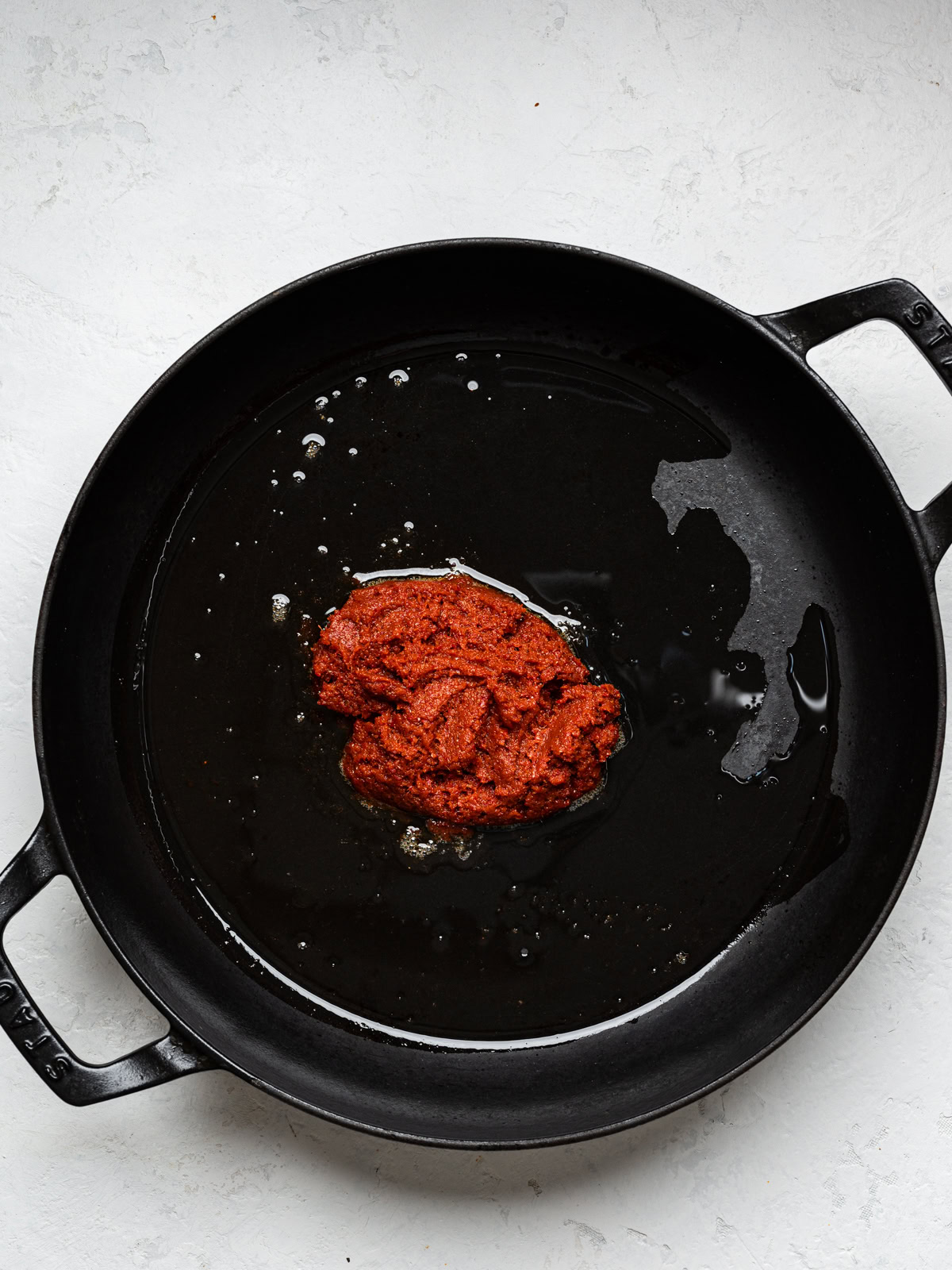
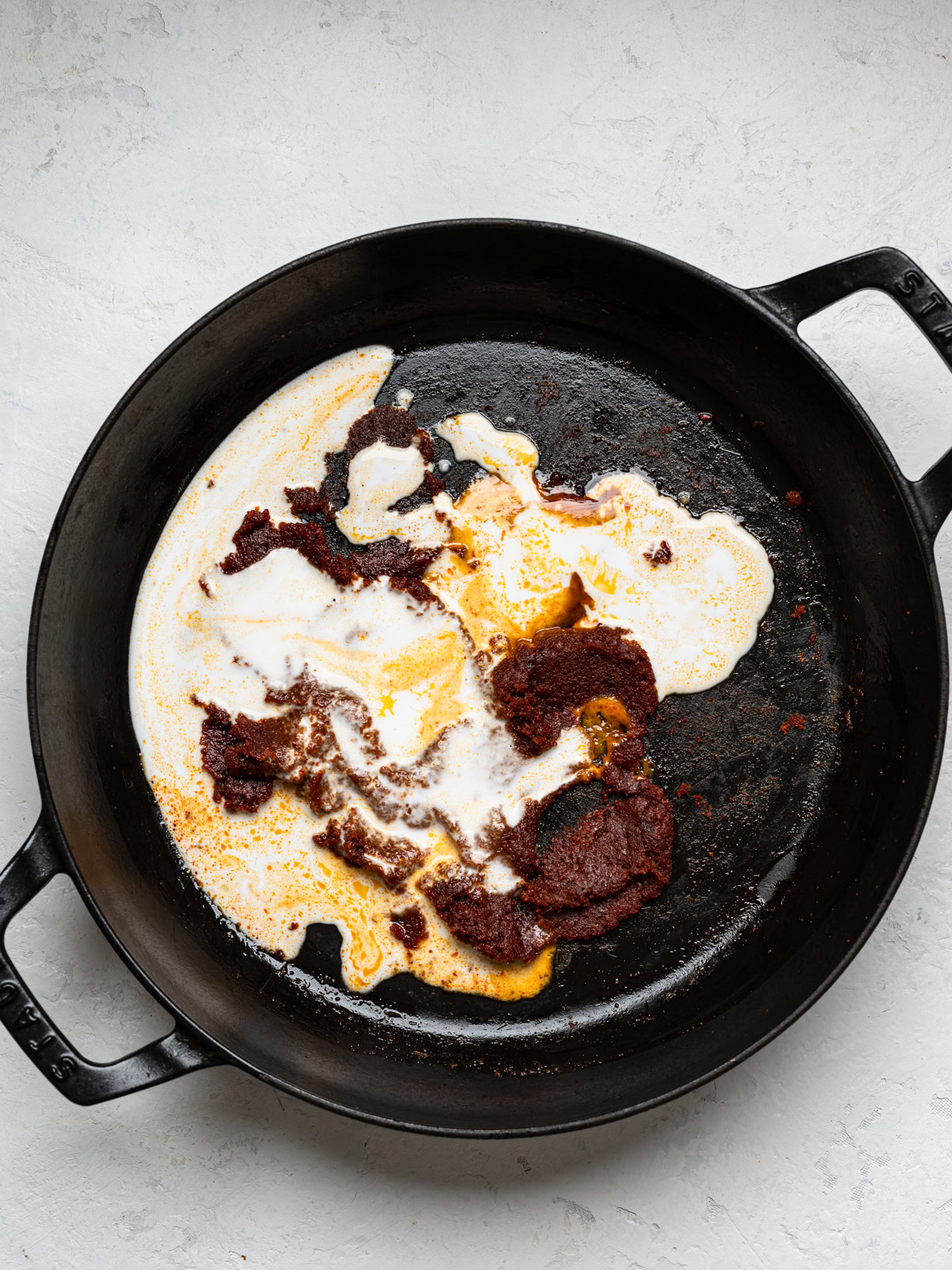

Step 2: Stir in the chicken and toss to coat thoroughly with the sauce. Cook for 1 minute, stirring constantly. Add half of the remaining coconut milk, stir to combine with chicken.
Step 3: Add the sugar, fish sauce, red peppers, and kaffir lime leaves. Simmer, stirring occasionally, until chicken is cooked through, about 5 to 8 minutes. Cooking time will vary depending on how small or large your chicken pieces are.
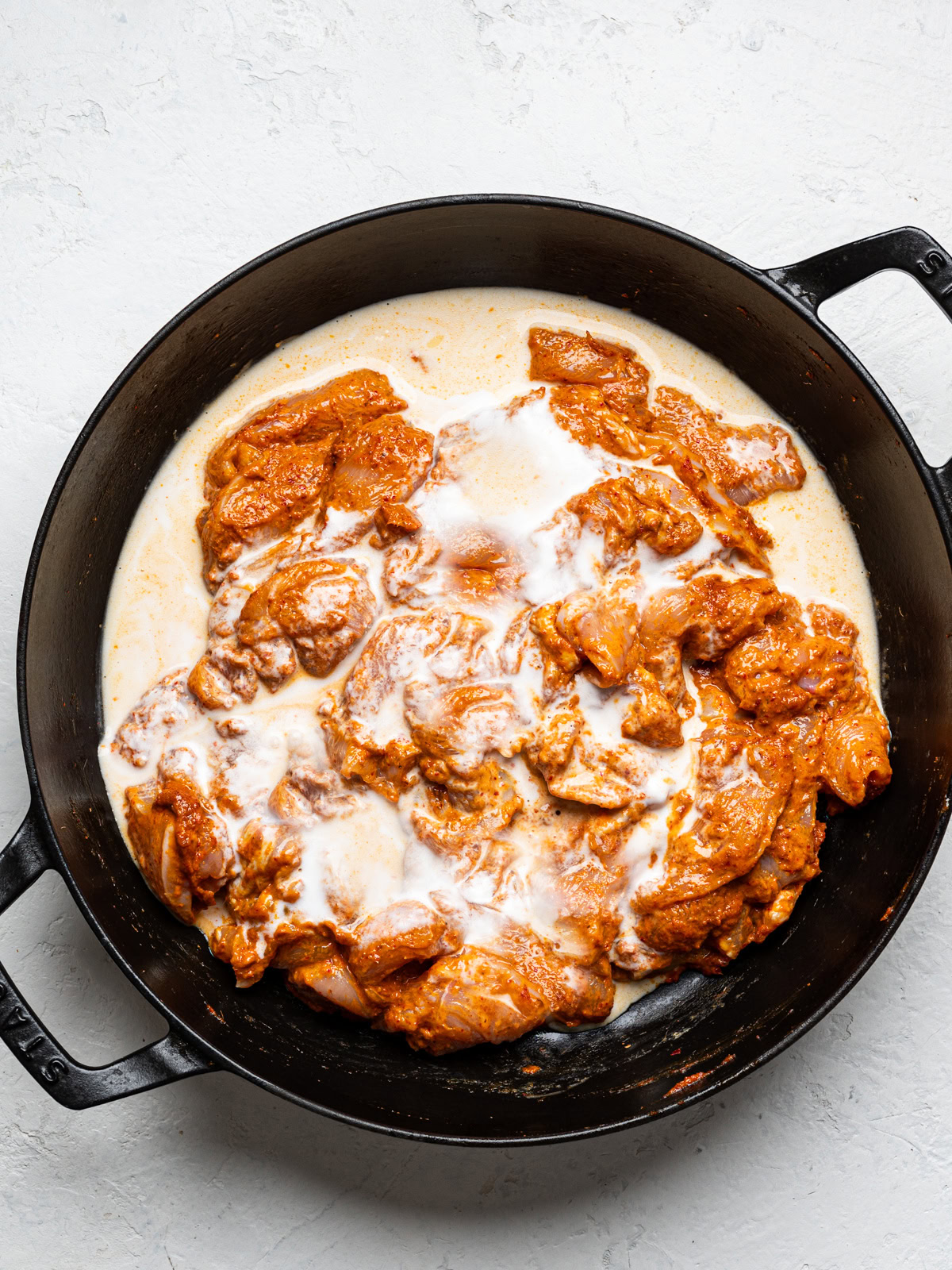
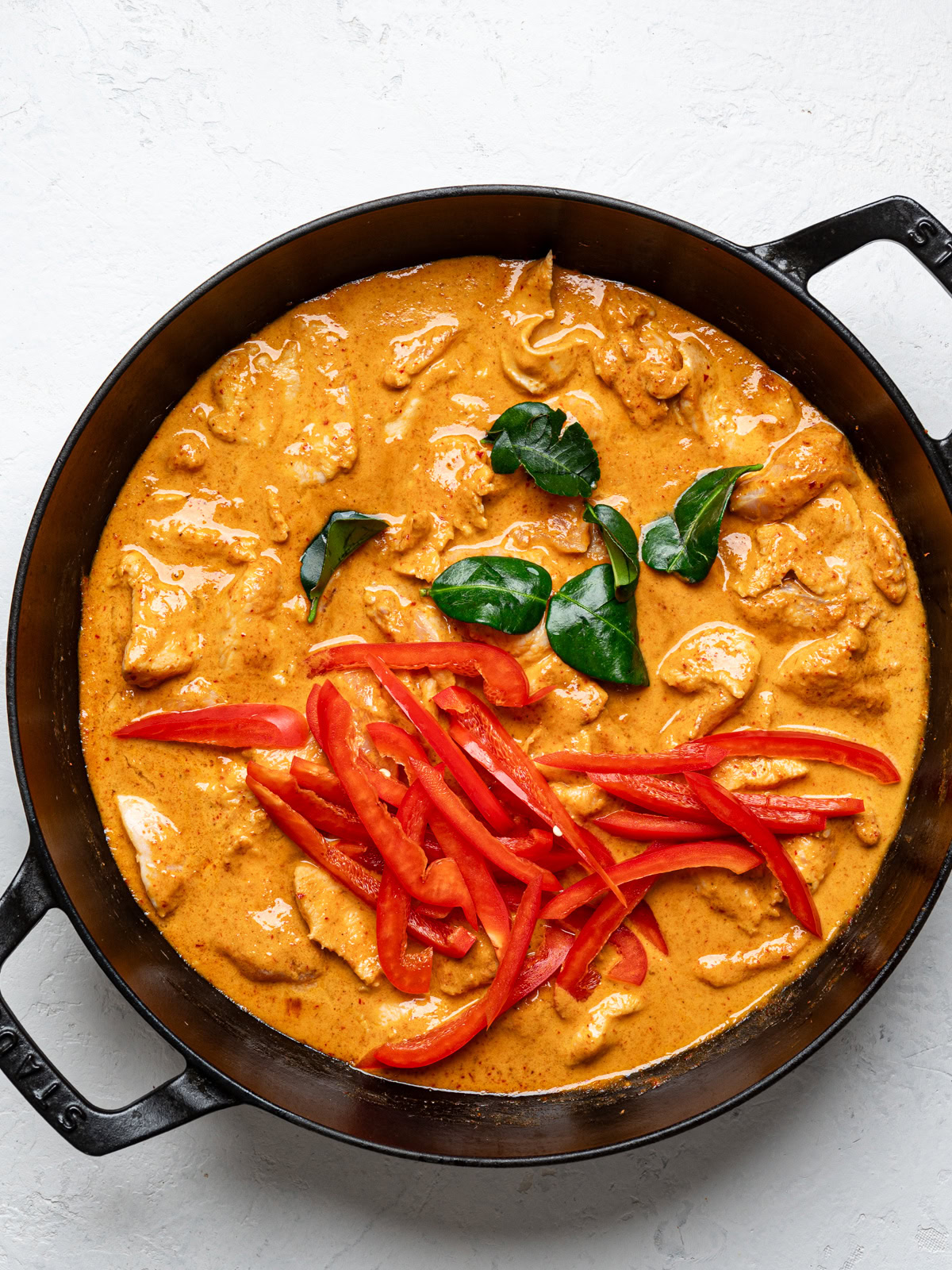
Step 4: If adding snow peas and Thai basil leaves, add them in now, followed by the peanut butter and the rest of the coconut milk. Stir until thoroughly incorporated. Taste and adjust the seasoning with more fish sauce and sugar, if necessary; turn off heat and discard the whole lime leaves.
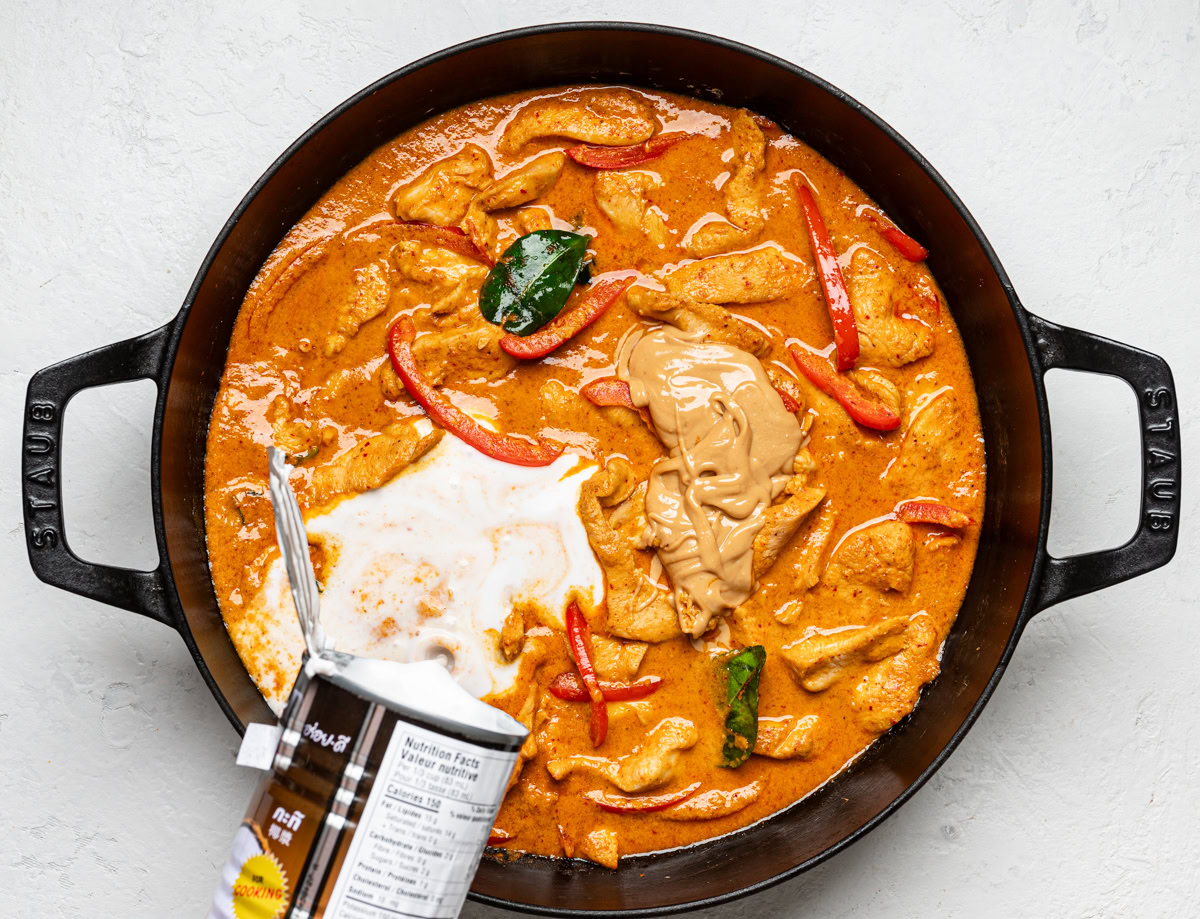
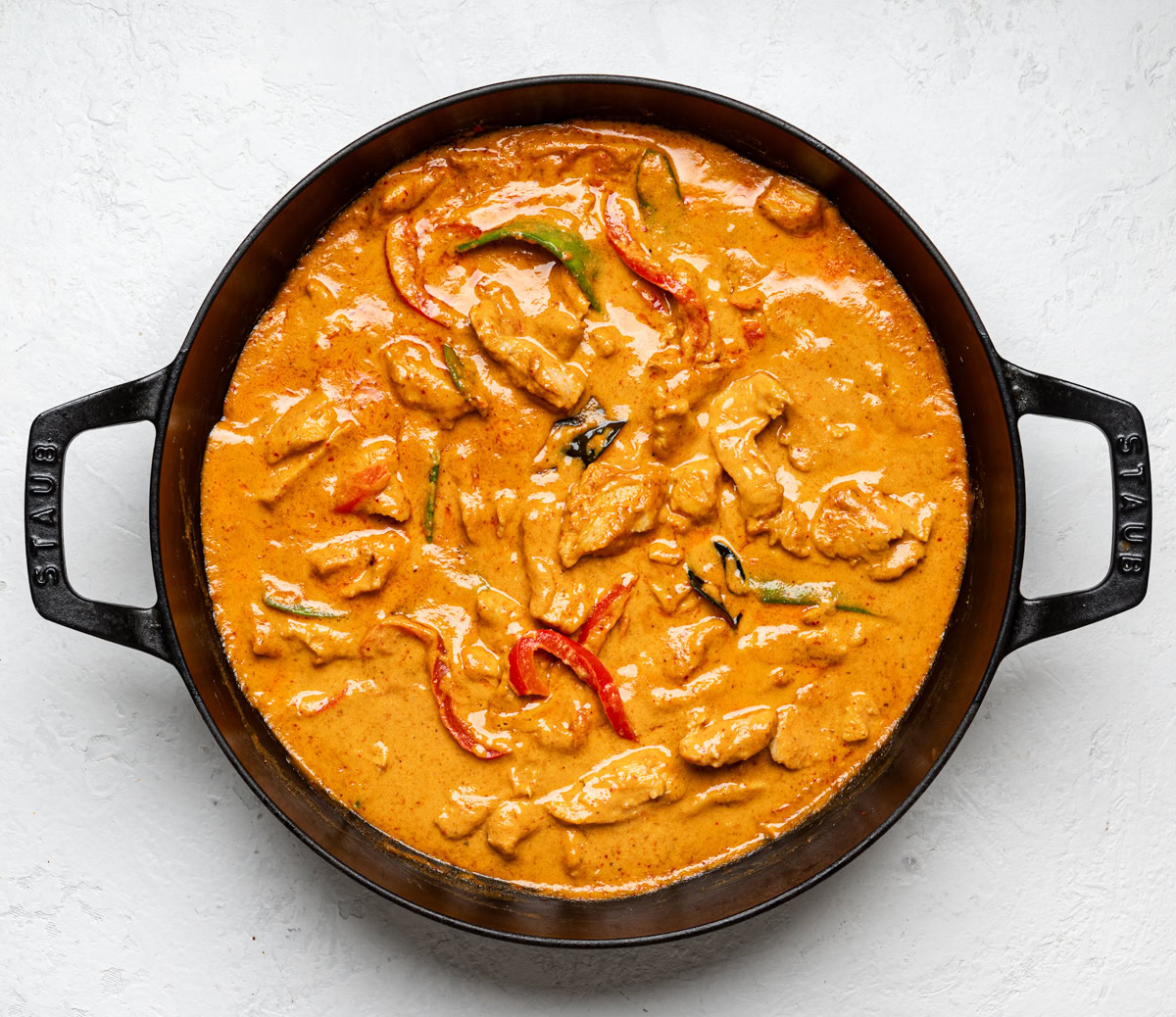
How Much Curry Paste To Use?
This one is tricky becasue you want maximum flavor from using a lot of curry paste, but the result could be quite spicy. In other words, if you reduce the paste, you reduce the flavor.
I like to use an entire can of Maesri curry paste in my panang chicken curry which makes the curry quite spicy, but not burning hot.
If your heat tolerance is low, or serving it to children, start with two tablespoons and adjust from there.
You can also use half panang curry paste, and half red curry paste (which is milder).
If you find your curry too spicy, stir in a bit more sugar, and/or another can of coconut milk.
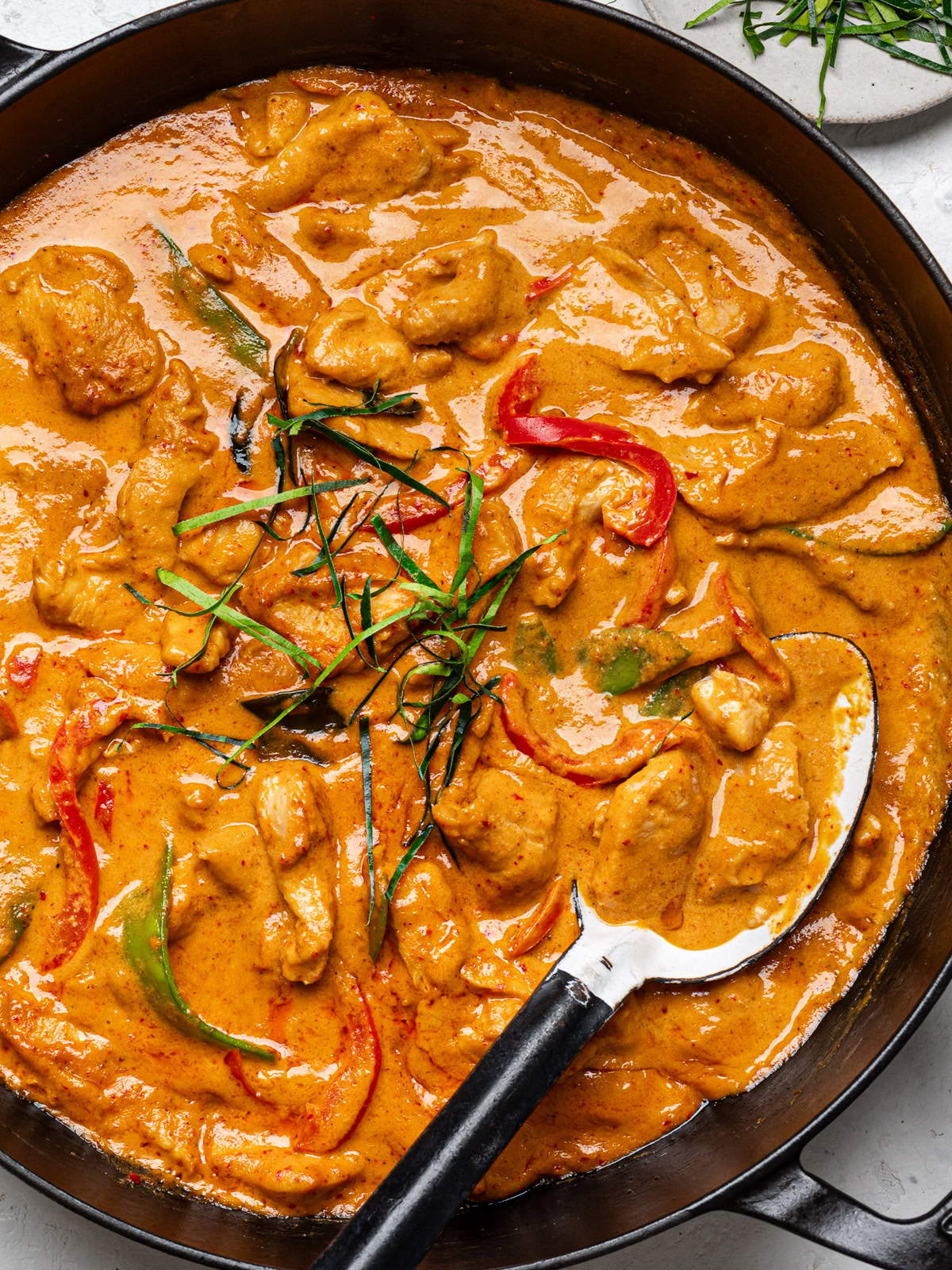
Frequently Asked Questions
Yes, it is. I would say it is a medium heat for someone like me who likes heat but not too much. If you can’t handle heat at all, use a Thai red curry paste, instead. If doing so, consider adding a tablespoon of fresh minced garlic and ginger (each) to your curry to give it a little more boost of flavor. The rest of the recipe stays the same.
You can easily make a vegetarian Panang Curry by omitting the fish sauce (use a vegan Worcestershire instead) and your favorite plant-based protein. Firm tofu or chickpeas would be great here.
Panang Chicken Curry reheats perfectly so you can make it up to 2 days ahead. You may need to add a little coconut milk or water to loosen the sauce.
Because it contains coconut milk, I don’t recommend freezing this curry. The texture of the curry would not be pleasant once thawed.
Serving Suggestions
Panang chicken curry goes really well with white rice. I like to make Thai Jasmine rice for this curry, but any white rice, or brown rice will work. Or keep it low-carb and serve with cauliflower rice.
A more authentic way to eat Thai curries, is to serve the rice on the side, then everyone can add small portions of rice to their bowl of curry.
Panang curry would also be wonderful with roasted broccoli, squash or sautéed gai lan (Chinese broccoli) on the side.
You can also serve Panang Curry with rice noodles, udon noodles, or soba noodles—yum!

Storage Suggestions
To store: Place leftovers in an airtight container and store in the refrigerator for 3-4 days.
To reheat: For best results, reheat the curry on the stovetop over gentle heat until warmed through. You may need to add a splash of water to loosen the sauce.
More Thai Recipes To Try
I hope you love this Panang Chicken Curry recipe as much as we do! If you give this recipe a try, please let us know in the comment box below. Your review and rating is very helpful to me and other readers. Thank you!
Panang Chicken Curry

Ingredients
- 2 Tablespoons oil (such as coconut oil or vegetable oil)
- 3 – 4 Tablespoons prepared Panang Curry Paste (see notes)
- 1 14 oz can full-fat, unsweetened coconut milk, divided
- 4 boneless skinless chicken thighs, sliced against the grain (about 2 pounds)
- 1 Tablespoon palm, coconut, brown, or turbinado sugar
- 2 Tablespoons fish sauce, or to taste, see notes below
- 1 red bell pepper; thinly sliced
- 6 kaffir lime leaves, crushed slightly with your hands
- 3 Tablespoons natural peanut butter (see notes below)
- 1 cup snow peas (optional)
- 10 Thai basil leaves (can substitute with Italian basil) plus a few more for garnish
- 4 additional kaffir lime leaves, middle vein removed, sliced thin (optional for garnish)
Instructions
- Heat oil in 12-inch saucepan over medium heat until shimmering. Add the curry paste and cook, stirring frequently, until paste is fragrant and darkens in color, about 4 to 5 minutes.
- Add 1/4 of the coconut milk to the pan and stir to combine with curry paste until glossy and thickened, about 1 minute. Stir in the chicken and toss to coat thoroughly with the sauce. Cook for 1 minute, stirring constantly, then add half of the remaining coconut milk; stir to combine.
- Stir in the sugar, fish sauce, red peppers, and whole kaffir lime leaves. Simmer over medium heat, stirring occasionally, until chicken is cooked through, about 5 to 8 minutes. Cooking time will vary depending on how small or large your chicken pieces are.
- If adding snow peas and Thai basil leaves, add them in now, followed by the peanut butter and the rest of the coconut milk. Stir until thoroughly incorporated.
- Taste and adjust the seasoning with more fish sauce and sugar, if necessary; turn off heat and remove whole kaffir lime leaves. Garnish each serving with a few strips of kaffir lime leaves and a few fresh Thai basil leaves, if using. Serve with rice or side of your choice.


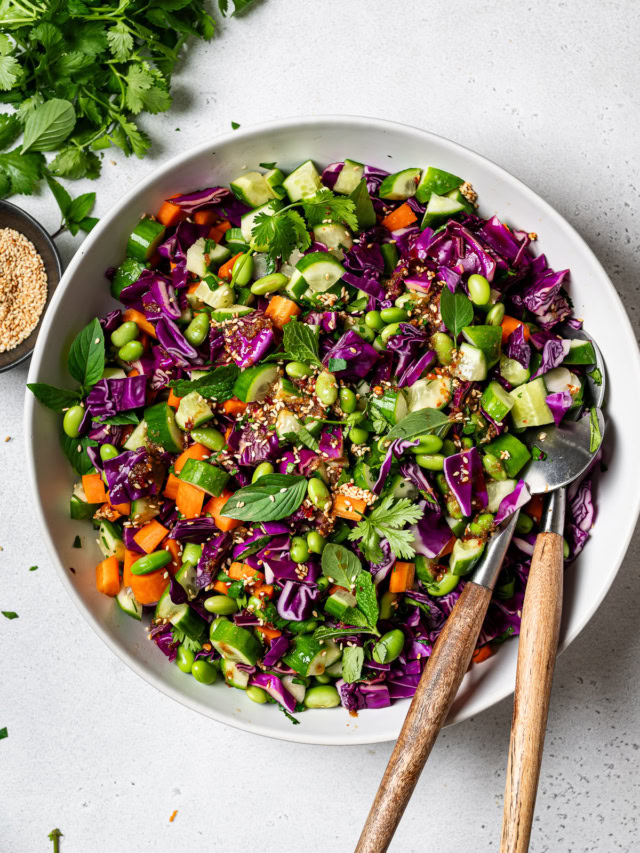


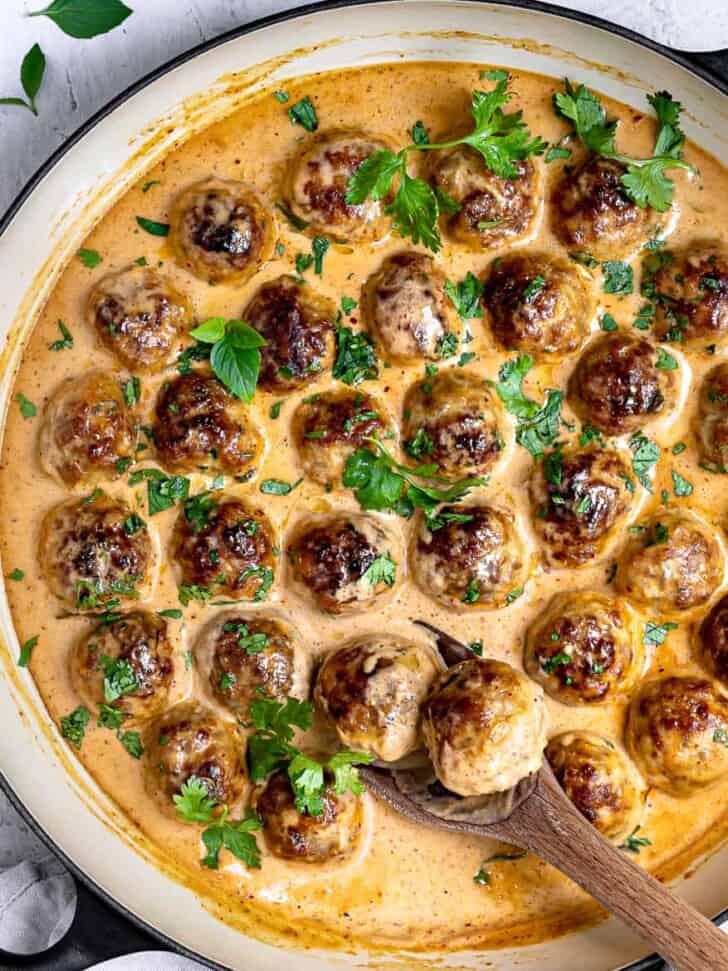

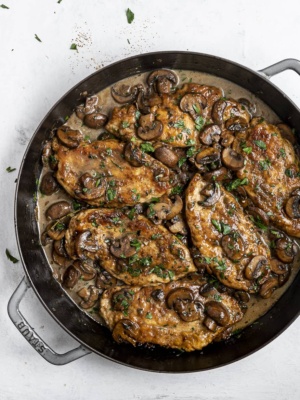

Join the Conversation